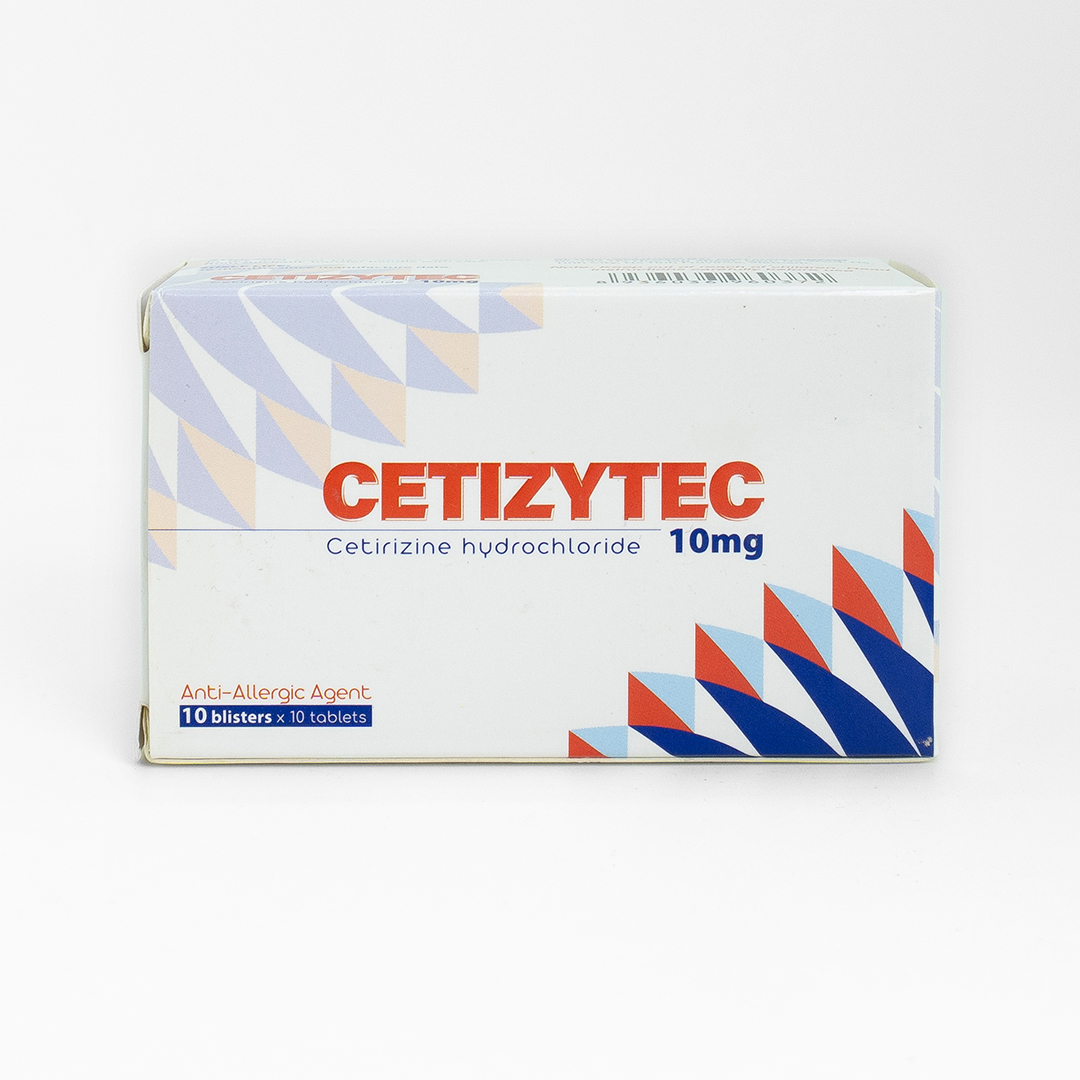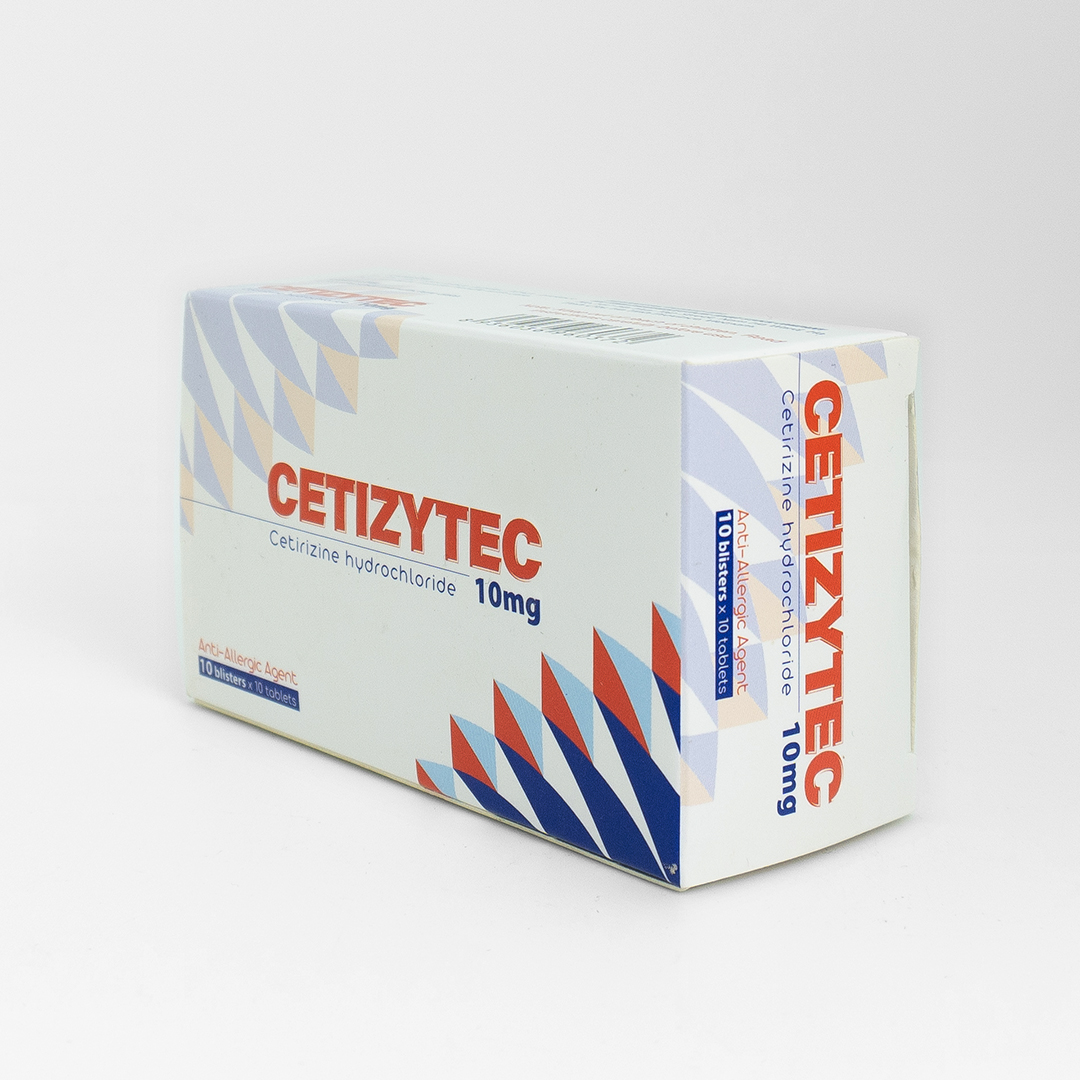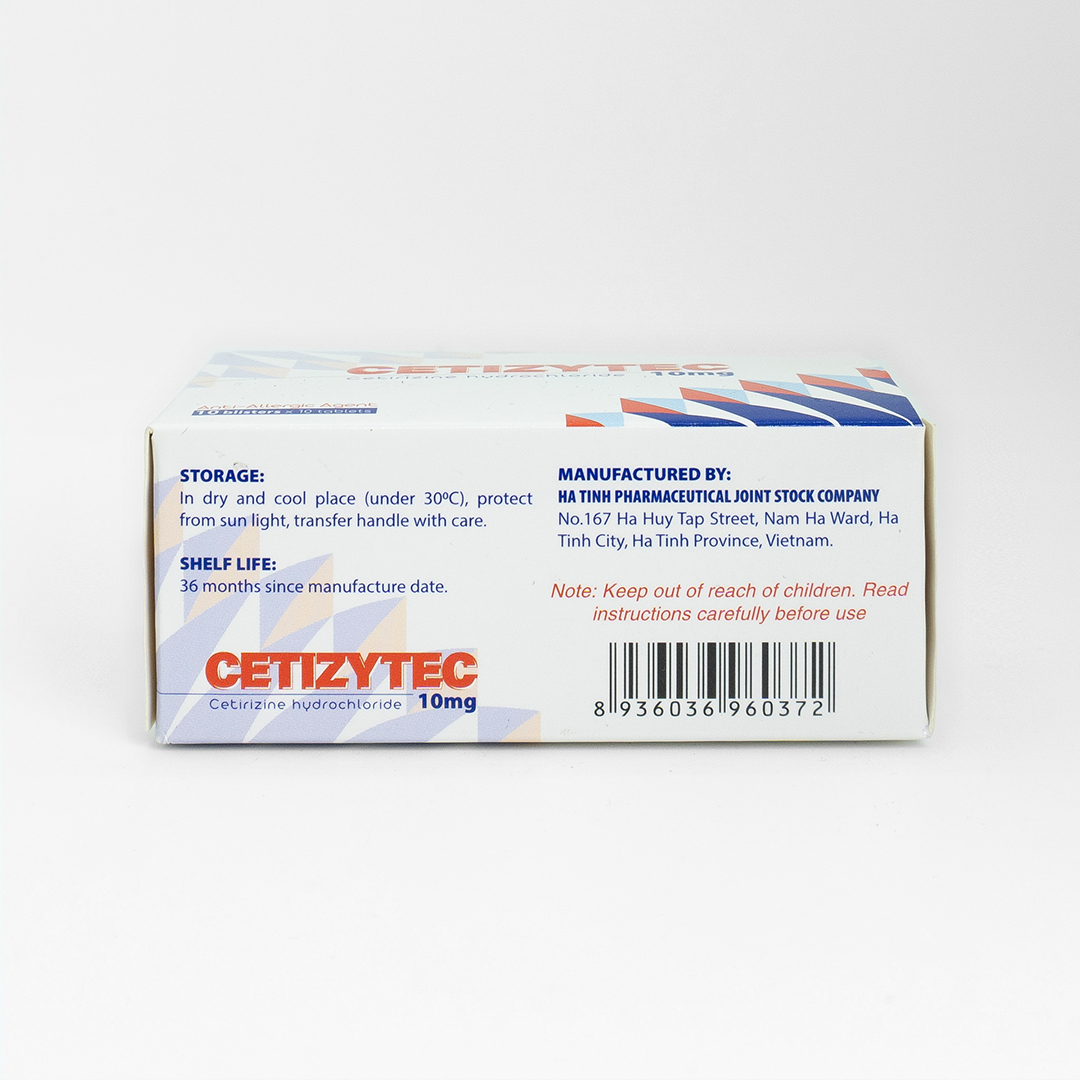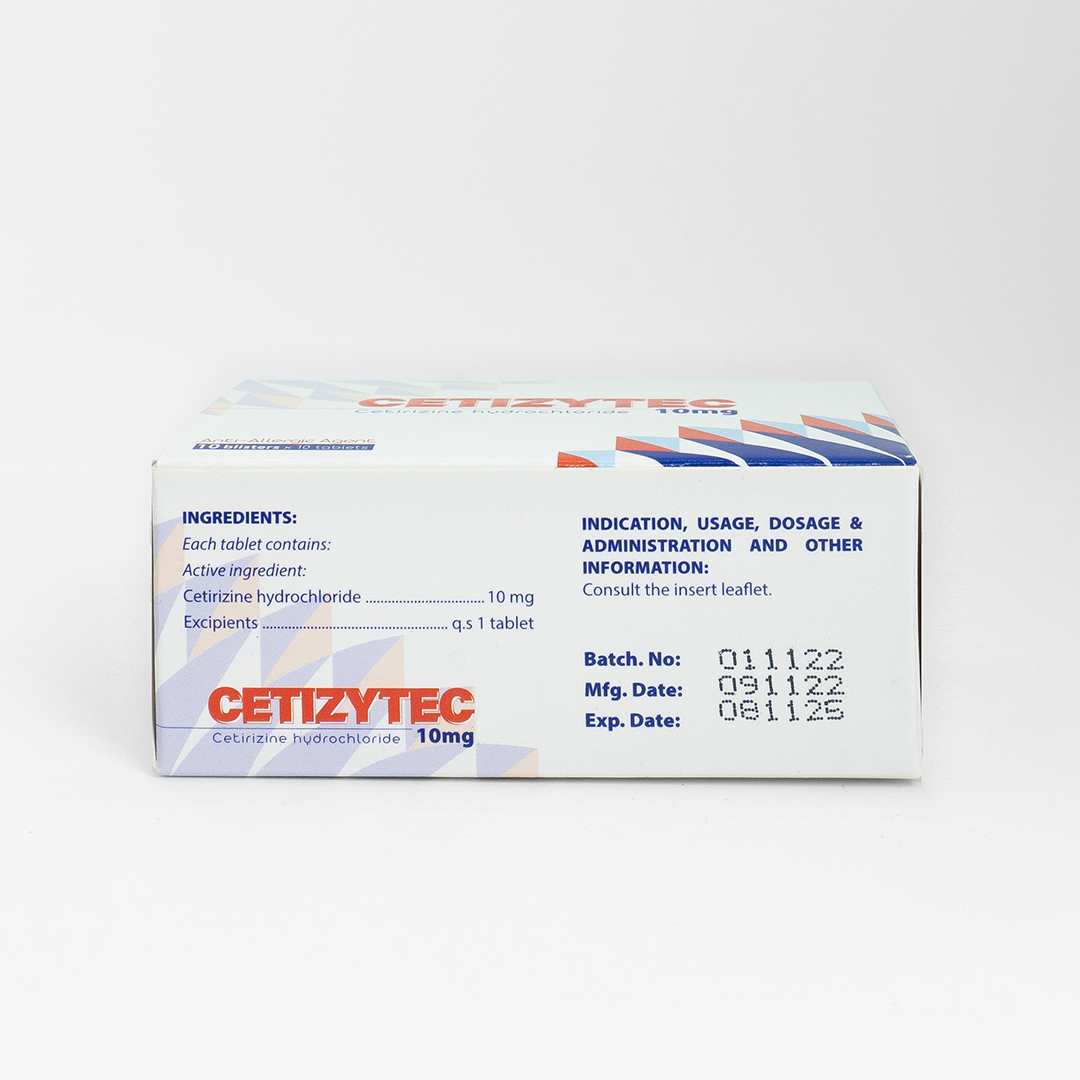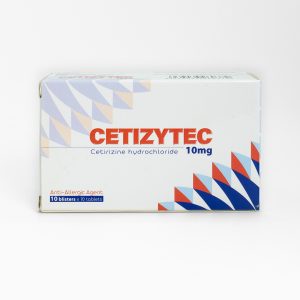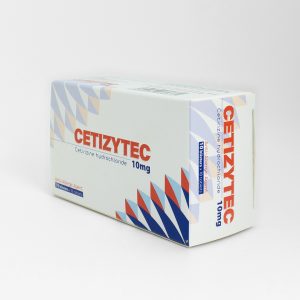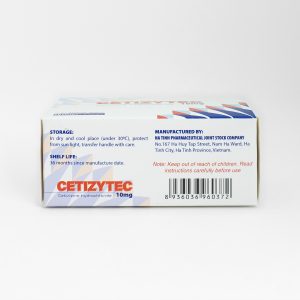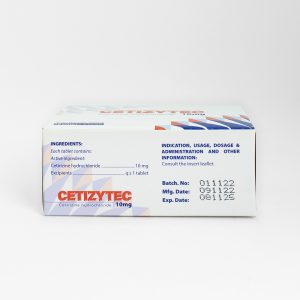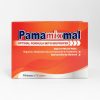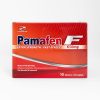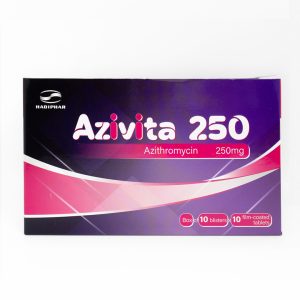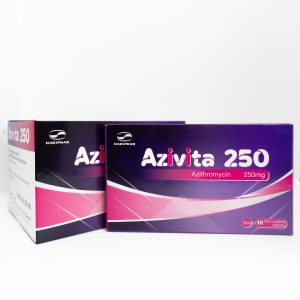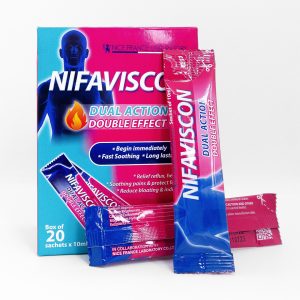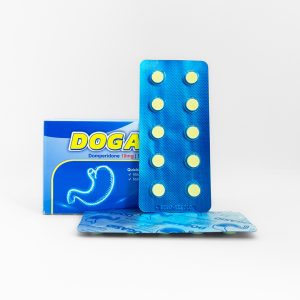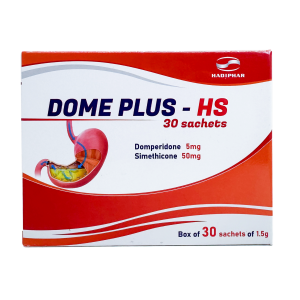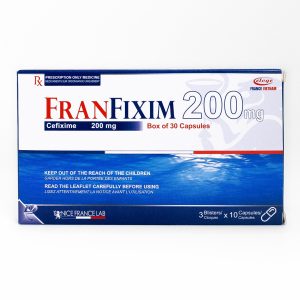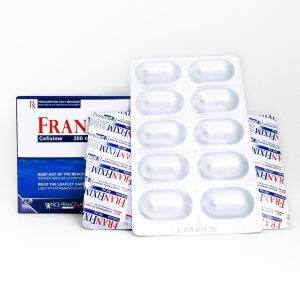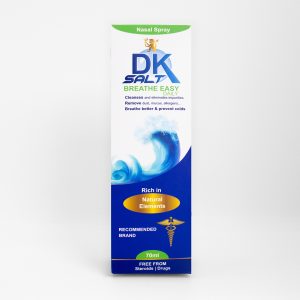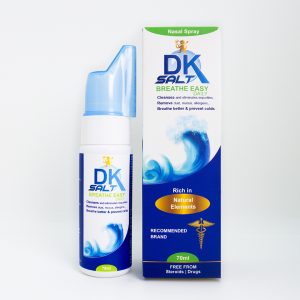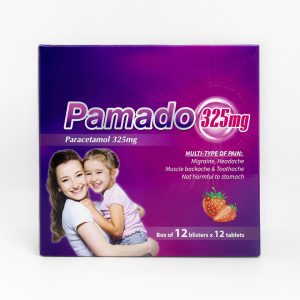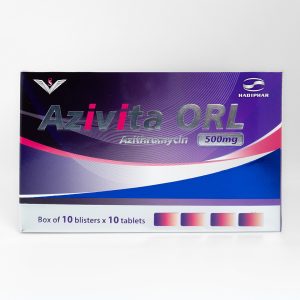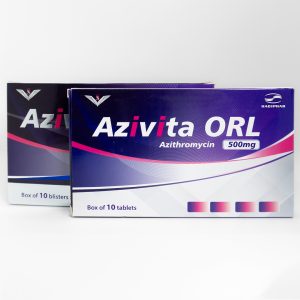INDICATION:
In adults and paediatric patients 6 years and above:
Cetirizine is indicated for the relief of nasal and ocular symptoms of seasonal and perennial allergic rhinitis.
Cetirizine is indicated for the relief of symptoms of chronic idiopathic urticaria.
USER TARGET:
People who have respiratory problems, or cough with phlegm
Used for people with allergies, urticaria, the relief of symptoms of chronic idiopathic urticaria.
DOSAGE AND ADMINISTRATION:
Adults and children 6 years of age and older: Take 1 tablet of 10 mg/day or 5 mg × 2 times/day.
CONTRAINDICATIONS:
Hypersensitivity to Cetirizine hydrochloride or to any of the ingredients.
WARNING AND IMPORTANT WHEN USING DRUGS:
Ask your doctor before using this medicine if:
Ask doctor before using this medicine:
If you have liver disease or are careful, include alcoholic liver disease.
CETIZYTEC is not toxic at therapeutic doses, and when used under the guidance of a physician. However, overdose of Cetirizine hydrochloride can cause liver failure. Taking multiple products containing Cetirizine hydrochloride at the same time can lead to harmful consequences (such as Cetirizine hydrochloride overdose).
Do not exceed the prescribed dose.
You should avoid drinking too much caffeine (e.g. coffee, tea and some cans) when using this product.
USING DRUGS FOR PREGNANT AND LACTATING WOMEN:
Pregnant:
For cetirizine prospectively collected data on pregnancy outcomes do not suggest potential for maternal or fontal/embryonic toxicity above background rates.
Animal studies do not indicate direct or indirect harmful effects with respect to pregnancy, embryonal/fetal development, parturition or postnatal development. Caution should be exercised when prescribing to pregnant women.
Breastfeeding Period:
Cetirizine passes into breast milk. A risk of side effects in breastfed infants cannot be excluded. Cetirizine is excreted in human milk at concentrations representing 25% to 90% of those measured in plasma, depending on sampling time after administration. Therefore, caution should be exercised when prescribing cetirizine to lactating women.
UNDESIRABLE EFFECTS:
Clinical studies have shown that cetirizine at the recommended dosage has minor undesirable effects on the CNS, including somnolence, fatigue, dizziness and headache. In some cases, paradoxical CNS stimulation has been reported.
Although cetirizine is a selective antagonist of peripheral H1-receptors and is relatively free of anticholinergic activity, isolated cases of micturition difficulty, eye accommodation disorders and dry mouth have been reported.
Instances of abnormal hepatic function with elevated hepatic enzymes accompanied by elevated bilirubin have been reported. Mostly these resolves upon discontinua tion of the treatment with cetirizine hydrochloride.
OVERDOSE AND TREATMENT:
For Cetirizine Hydrochloride:
Symptoms:
Symptoms observed after an overdose of cetirizine are mainly associated with CNS effects or with effects that could suggest an anticholinergic effect.
Adverse events reported after an intake of at least 5 times the recommended daily dose is: confusion, diarrhea, dizziness, fatigue, headache, malaise, mydriasis, pruritus, restlessness, sedation, somnolence, stupor, tachycardia, tremor, and urinary retention.
To solve:
There is no known specific antidote to cetirizine.
Should overdose occur, symptomatic or supportive treatment is recommended. Gastric lavage may be considered shortly after ingestion of the drug. Cetirizine is not effectively removed by hemodialysis
PHARMACOLOGICAL PROPERTIES:
PHARMACODYNAMICS:
Cetirizine hydrochloride:
In addition to its anti-H1 effect, cetirizine was shown to display anti-allergic activities: at a dose of 10 mg once or twice daily, it inhibits the late phase recruitment of eosinophils, in the skin and conjunctiva of atopic subjects submitted to allergen challenge.
– Clinical efficacy and safety
Studies in healthy volunteers show that cetirizine, at doses of 5 and 10 mg strongly inhibits the wheal and flare reactions induced by very high concentrations of histamine into the skin, but the correlation with efficacy is not established.
In a six-week, placebo-controlled study of 186 patients with allergic rhinitis and concomitant mild to moderate asthma, cetirizine 10 mg once daily improved rhinitis symptoms and did not alter pulmonary function. This study supports the safety of administering cetirizine to allergic patients with mild to moderate asthma.
In a placebo-controlled study, cetirizine given at the high daily dose of 60 mg for seven days did not cause statistically significant prolongation of QT interval.
At the recommended dosage, cetirizine has demonstrated that it improves the quality of life of patients with perennial and seasonal allergic rhinitis.
– Paediatric population
In a 35-day study in children aged 5 to 12, no tolerance to the antihistaminic effect (suppression of wheal and flare) of cetirizine was found. When a treatment with cetirizine is stopped after repeated administration, the skin recovers its normal reactivity to histamine within 3 days.
PHARMACOKINETICS:
Cetirizine hydrochloride:
The steady – state peak plasma concentrations are approximately 300 ng/mL and is achieved within 1.0 ± 0.5 h. The distribution of pharmacokinetic parameters such as peak plasma concentration (Cmax) and area under curve (AUC), is unimodal.
The extent of absorption of cetirizine is not reduced with food, although the rate of absorption is decreased. The extent of bioavailability is similar when cetirizine is given as solutions, tablet.
MANUFACTURED BY: HA TINH PHARMACEUTICAL JOINT STOCK COMPANY
No.167 Ha Huy Tap Street, Nam Ha Ward, Ha Tinh City, Ha Tinh Province, Vietnam.
Note: Keep out of reach of children. Read instructions carefully before use.
